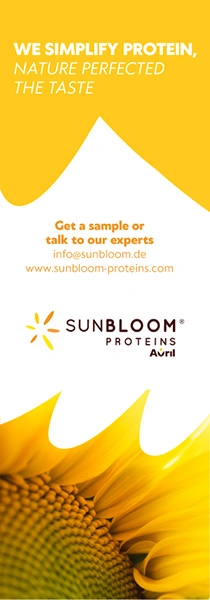
- Industry news
Industry news
- Category news
- Reports
- Key trends
- Multimedia
Multimedia
- Journal
- Events
- Suppliers
Suppliers
- Home
- Industry news
Industry news
- Category news
- Reports
- Key trends
- Multimedia
Multimedia
- Events
- Suppliers
Suppliers
Salt Awareness Week Survey Reveals High Levels of Salt in UK Takeaway Pizzas

Takeaway pizzas contain up to two and a half times more salt than the average supermarket pizza. A local pizzeria in London was found to be selling a pizza saltier than sea water. Half of all the takeaway pizzas surveyed contain your entire daily salt recommendation per pizza.
26 Mar 2012 --- New research by Consensus Action on Salt and Health (CASH) and the Association of London Environmental Health Managers (ALEHM) for Salt Awareness Week 2012 reveals massive differences in the salt and fat content between takeaway pizzas and those purchased from supermarkets. Salt Awareness Week 2012 (26th March – 1st April) is highlighting that a diet high in salt can lead to raised blood pressure, tripling the risk of having a stroke. As 75% of the salt we eat is hidden in our food, CASH are urging manufacturers to stop hiding salt, and fat, in our food.
“It is surprising there is still so much salt hidden in every day foods” says Katharine Jenner, Campaign Director of CASH. “It should be up to us how much salt we eat, but whilst there is so much salt in our food, people are unable to choose a healthier diet and are therefore putting themselves at risk of a stroke. This is why we are highlighting hidden sources of salt in our food for Salt Awareness Week. ”
The survey, which is the most comprehensive yet, looked at 199 margherita and pepperoni pizzas, analysed from local takeaways, pizza chains and leading supermarkets across the country, and showed takeaway pizzas were the highest in salt, containing up to two and a half times more salt than the average supermarket pizza (2.73g vs. 1.08g salt/100g). One takeaway pizza outlet [Adam & Eve] was found to be selling a pizza saltier than sea water, containing a huge 2.73g per 100g.
Top 5 saltiest takeaway pizzas:
1. The Adam & Eve Pepperoni Pizza (Barnet) - 2.73g salt per 100g (10.57g per 388g pizza)
2. La Vera Italia Pepperoni Pizza (Wandsworth) - 2.43g salt per 100g (10.68g per 439.6g pizza)
3. Ciao Bella Pepperoni Pizza (Havering) - 2.21g salt per 100g (9.22g per 417.4g pizza)
4. Ciao Bella Margherita Pizza (Havering) – 2.13g per 100g (7.69g per 361.8g pizza)
5. Il Mascal Zone Pepperoni Pizza (Barnet) - 2.08g salt per 100g (9.21g per 443g pizza)
Shockingly, half of all the takeaway pizzas surveyed contain your entire 6g maximum daily recommendation for salt per pizza. Even worse, if you were to eat an entire pepperoni pizza from ‘The Adam & Eve’ or ‘La Vera Italia’, you would be consuming more than 10g of salt.
“It’s a national disgrace that our health is put at risk; the government is not taking enough action to reduce the amount of salt in the takeaway sector. The supermarkets have made the same pizzas with much less salt – showing how easy it would be for the whole sector to make big salt reductions” says Professor Graham MacGregor, Wolfson Institute, Chairman of CASH. “Salt puts up our blood pressure – the highest risk factor for stroke. Reducing our intake would save thousands of people suffering and dying from a stroke.”
Not only do takeaway pizza businesses have dangerous levels of salt in their pizzas, they don’t have to provide any form of nutritional labelling, meaning that consumers are unable to easily choose lower salt options. Thankfully where labelling is compulsory, in the supermarkets, 8 out of 10 pizzas (85%) provided some form of front of pack nutrition information, which is great for customers that want to choose a healthier diet. The salt reduction targets are easily achievable; three quarters of the supermarket pizzas (72%) currently meet the salt target, whereas only less than a fifth (16%) of takeaway pizzas do.
Many supermarkets have made great progress in removing salt from their pizzas, for instance, Morrison’s had 5 of the 10 lowest salt own-brand pizzas surveyed. However despite containing a third less salt on average compared to takeaways (1.08g/100g compared to 1.57g/100g), many supermarket pizzas are still classified as ‘unhealthy’; none of the surveyed supermarket pizzas were found to be ‘green’ (low) in salt, fat or saturated fat.
In fact, whilst less than one in five (16%) supermarket pizzas would get a ‘red’ (high) traffic light label for salt, two in three (69%) would get a ‘red’ for saturated fat, showing there is still progress to be made. The government has called for trans fats should be removed from all food by the end of 2012, yet four out of five (84%) of the takeaway pizzas still contained trans fats.
Top 5 saltiest pizzas from supermarkets
1. Tesco Full-on-flavour Simply Pepperoni thin stone-baked pizza (fresh)- 1.8g salt/100g (4.77g per 265g pizza)
2. Iceland Stonebaked Spicy Double Pepperoni Pizza (frozen) - 1.7g salt/100g (6.29g per 370g pizza)
3. Morrisons Extra Thin Triple Pepperoni Pizza (frozen) - 1.7g salt/100g (5.81g per 342g pizza)
4. Dr. Oetker Ristorante Pizza Pepperoni Salame (frozen) - 1.68g salt/100g (5.36g per 320g pizza)
5. Dr. Oetker Casa di Mama Pizza Quattro Formaggi (frozen) - 1.6g salt/100g (6.32g per 395g pizza)
A Pizza Express margherita pizza from a supermarket contains almost half (43%) the amount of salt per 100g than the restaurant takeaway equivalent (0.85g vs. 1.493g salt per 100g) – interestingly, Pizza Express recommend on pack that you only eat half of the supermarket version whereas you would eat the whole restaurant takeaway version.
In fact, there were very inconsistent portion recommendations across the board, which adds to consumer confusion, for example; Dr.Oetker recommends that you eat their entire 395g pizza (Casa di Mama Pizza Quattro Formaggi) which would give you 6.32g of salt – more than the maximum recommendation for an entire day (6g), whereas Chicago Town recommends a portion 5 times smaller, just one quarter of their 305g pizza (Edge to Edge Thin & Crispy California Cheese Pizza), which would give you 0.75g salt - assuming you could stop eating there!
“It makes no sense that one pizza can contain more than your entire daily recommendation for salt, whilst another could be included as part of a healthy balanced diet” Hannah Brinsden, CASH Nutritionist adds “Whilst a lot of the salt is hidden in the pizza base and the cheese, you can still choose to have a healthier pizza by watching out for high salt pizza toppings such as bacon, pepperoni, anchovies, and olives and making sure you check the labels when shopping”
Source: Consensus Action on Salt and Health











